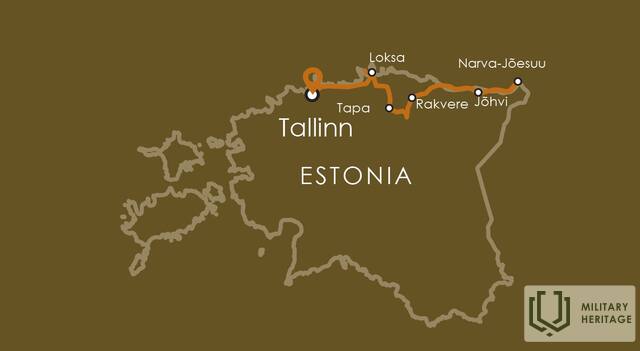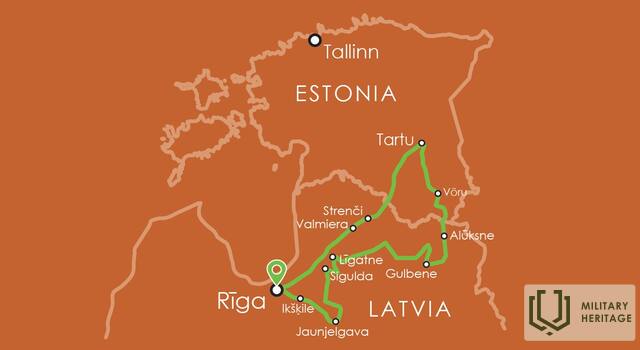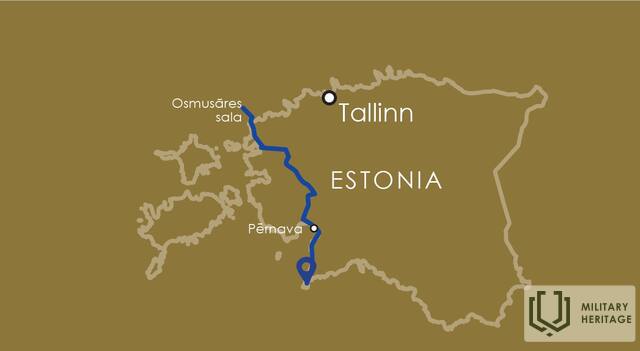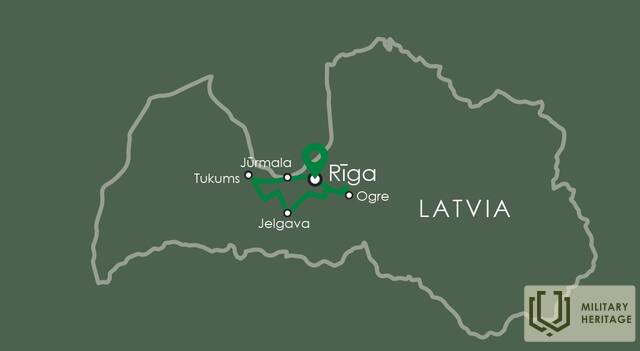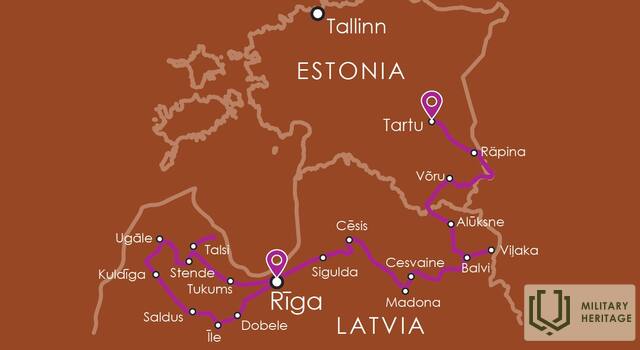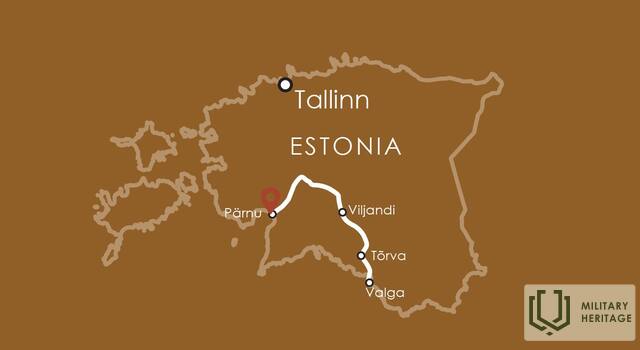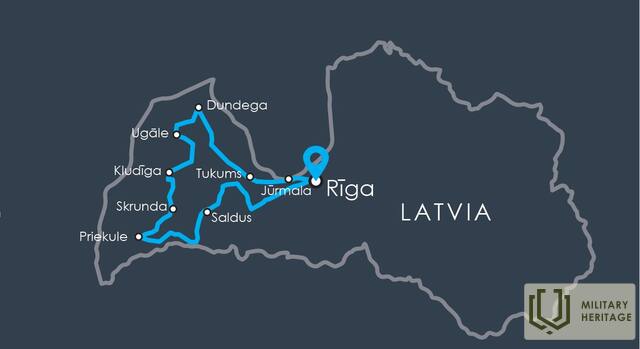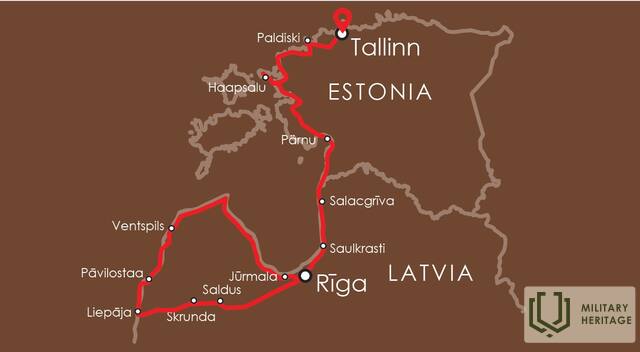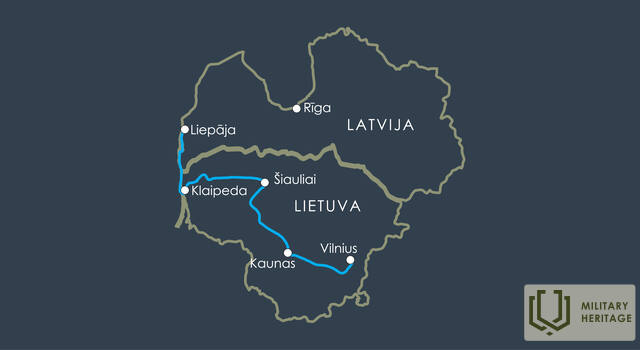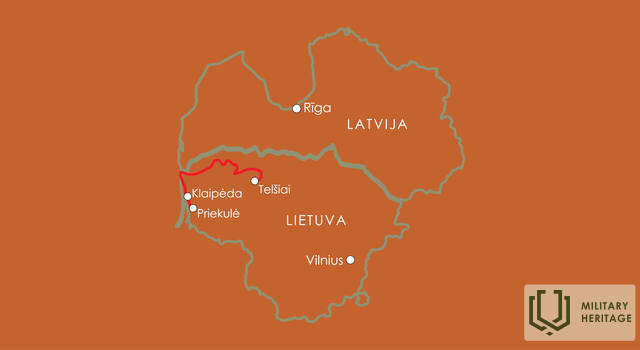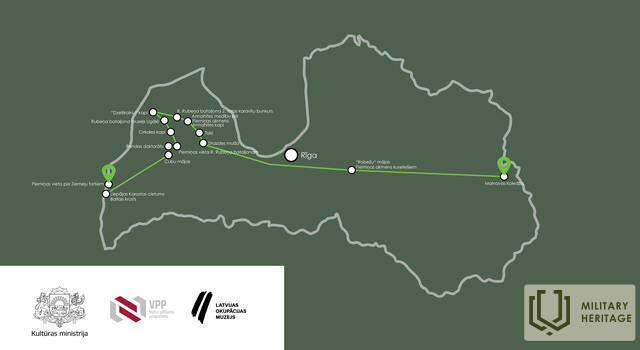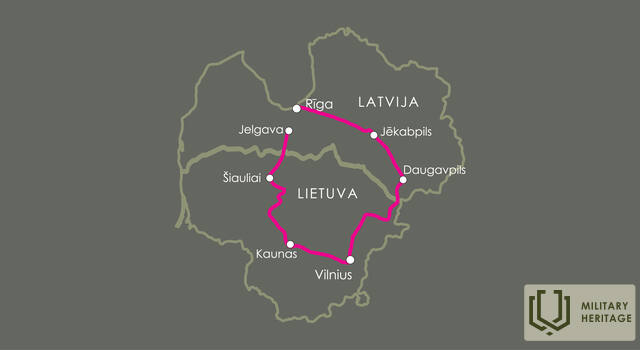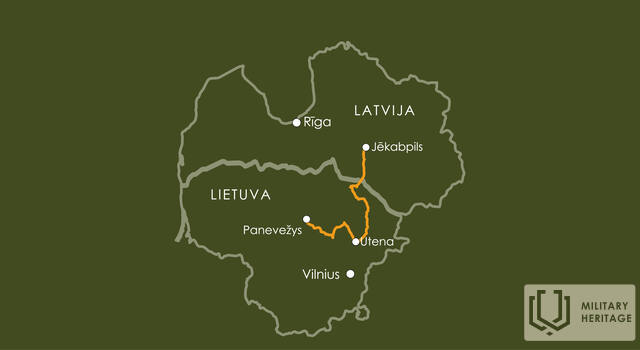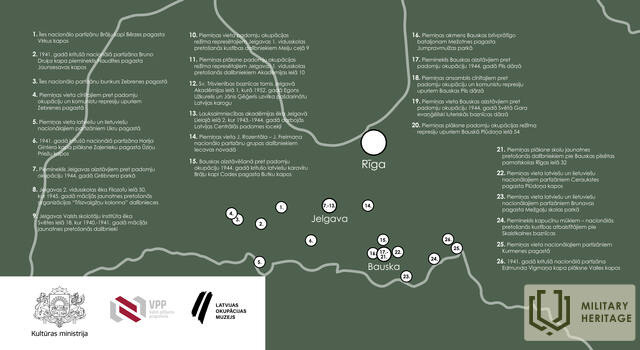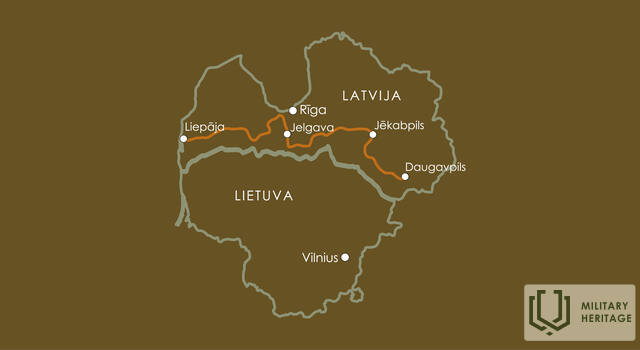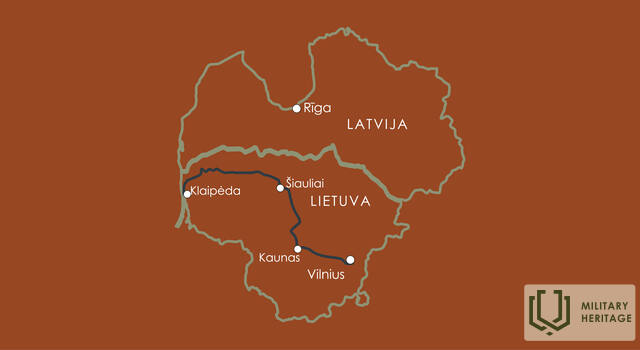Туристические маршруты военного наследия
Также по объектам военного наследия составлены маршруты, расписанные по дням. Кроме этого, предлагаются рекомендации по размещению и возможностям питания на маршруте или рядом с ним.
Там также может быть контактная информация, с помощью которой вы можете обратиться за помощью для планирования поездки, времени посещения, узнать об информационных центрах и т. д. Вы можете адаптировать каждый маршрут в соответствии со своими интересами. Используйте карту и информацию, указанную для каждого объекта, чтобы убедиться, что вы знаете, когда объект будет открыт для посещения.
Это позволит вам планировать количество времени, которое вам понадобится для поездки, посещения и проживания.
Жизнь в Эстонии во времена советской оккупации
Маршрут включает объекты военного наследия в окрестностях столицы Эстонии Таллинна и музеи, рассказывающие об истории войн в разное время и советской оккупации на всей территории Эстонии.
Сааремаа и Хийумаа – застава на морской границе Эстонии
Сааремаа и Хийумаа являются крупнейшими островами Эстонии и образуют эстонскую границу на западе страны, поэтому инфраструктура защиты побережья на островах постоянно строилась и улучшалась. Сражения между разными войсками происходили как во время Первой, так и во время Второй мировой войны. Даже после войны на острове Хийумаа действовали национальные партизаны.
Советская армия в оккупированной Эстонии
Маршрут включает объекты военного наследия и бывшие закрытые территории, проходит через национальный парк Лахемаа, город Раквере на севере страны до Нарвы, приграничного города с Россией на востоке.
Наследие советской оккупации на севере Видземе и в южной Эстонии
Маршрут знакомит с присутствием Советской Армии и КГБ* в течение 50-летнего периода советской оккупации в Латвии и Эстонии. За это время строились и эксплуатировались армейские базы, создавались секретные военные объекты, военные аэродромы, закрытые военные территории. Лояльность жителей советскому режиму контролировалась КГБ, те, кто выступал против уничтожались морально и физически.
По следам Цесисских боёв
На этом маршруте вы ознакомитесь с событиями Цесисской битвы 1919 года, когда вооруженные силы Временного правительства Латвии вместе с эстонской армией нанесли поражение немецкому отряду Ландесвера и Железной дивизии. В истории эстонской войны эти сражения назывались войной Ландесвера. Цесисская битва - одно из решающих событий в борьбе за свободу Латвии и в защите независимости новообразованного латвийского государства, провозглашенного 18 ноября 1918 года.
Вооружённое сопротивление советской оккупационной власти в Селии
На маршруте вы узнаете о свидетельствах вооруженного движения сопротивления советскому оккупационному режиму в Селии , о местах расположения национальных партизанских бункеров, посетите места боев и мемориалы, а также ознакомитесь с воспоминаниями партизан и их сторонников.
В память об Освободительной войне в западной Эстонии
Уезды Пярну и Ляэне расположены на западном побережье Эстонии. Осмуссааре – это эстонский остров площадью 4,8 км2 у входа в Финский залив - пограничный пост. После Второй мировой войны на острове дислоцировалась часть Советской армии, и остров стал закрытой военной зоной.
Свидетельства сражений Первой мировой войны и Рождественских боёв в Рижском регионе
Маршрут ведет к местам, связанным с Рождественскими боями - нападением латышских стрелков на части немецкой армии в 1916 году в особенно суровых зимних условиях. Рождественские бои считаются самым известным и драматичным событием в истории Латвии во время Первой мировой войны.
По следам лесных братьев в Латвии и Эстонии
Во время советской оккупации, во время Второй мировой войны и сразу после нее многие в Латвии и Эстонии не приняли жизнь в условиях оккупационного режима и хотели восстановить независимость своей страны. Они уходили в лес, жили в своих землянках и нападали на советские репрессивные власти. Люди надеялись, что западные страны не допустят советской оккупации и что Латвия и Эстония скоро снова станут независимыми. Национальная партизанская борьба продолжалась до конца 1950-х гг.
По следам борьбы за свободу Эстонии
По маршруту расположены места, связанные с событиями войны за независимость Эстонии, от Пярну на западе Эстонии до приграничного города с Латвией – Валги. Война за независимость Эстонии длилась с 1918 по 1920 год.
От мест боёв Курляндского котла до советского наследия в Дундаге
Маршрут включает места, связанные с событиями окончания Второй мировой войны с октября 1944 года по май 1945 года, когда немецкая армия отступала из Риги в Курземе, где на разных участках Курземского фронта прошло 6 крупных сражений. Из-за жестоких боев этот период войны известен как Курляндский котел или Курземская крепость. Красная Армия не могла завоевать Курземе вплоть до капитуляции немецкой армии.
Военное наследие вдоль железного занавеса. Маршрут на автомобиле из Таллинна в Лиепаю
В советское время западную границу страны составляло Балтийское побережье. Границу между СССР и западными странами назвали «железным занавесом», потому что она изолировала жителей Советского государства от остального мира. Большая часть всей прибрежной территории как в Латвии, так и в Эстонии в советское время была закрыта, там располагались армейские базы, вышки и батареями береговой охраны. Местным жителям требовались специальные разрешения для въезда и выезда. Несмотря на строгую безопасность, нередкими были попытки пересечь границу и бежать из СССР на запад.
Большой трансграничный маршрут – военное наследие за 100 лет Латвии и Эстонии
Маршрут представляет военное наследие Латвии и Эстонии, сформировавшееся за период более 100 лет от Первой мировой войны до наших дней. История о том, как обе страны возникли в конце Первой мировой войны, как они защищали свое существование в Войнах за независимость, как две страны были разрушены Второй мировой войной, почему национальные партизаны сопротивлялись советской оккупации более чем через десять лет после войны, и как спустя десятилетия оккупации независимость была восстановлена.
Латгалия – восточная граница Латвии
Латгалия – восточная граница Латвии, стран Балтии и Европейского Союза. Исторически Латгалия находилась на перекрёстке различных исторических событий и территорий. Её не пощадили ни две мировые войны XX века, ни период советской оккупации, последовавший за последней войной. Маршрут предлагает широкий спектр объектов военного наследия, представляющих все периоды военной истории XX века, а также возможность узнать больше о создании и защите государственных границ, как в историческом, так и в современном мире. Этот маршрут или его часть можно соединить со следующими маршрутами в Литве: « Партизанские дороги и тропы в Аукштайтии », « Места боёв латышских и литовских национальных партизан – лесных братьев ».
Военное наследие за железным занавесом
Прибалтика была самой западной границей Советского Союза в советское время и в годы холодной войны. За этой границей находилось то, что советская пропаганда называла «загнивающим Западом». Границы СССР тщательно охранялись, чтобы советские люди не увидели и не испытали на себе жизнь людей к западу от границы СССР. Даже индивидуальная рыбалка в Балтийском море была запрещена из опасения, что люди начнут бежать на своих лодках через Балтийское море в Швецию. Это было время, когда страны Балтии находились за так называемым железным занавесом, который могли пересечь лишь «избранные», часто приближенные к режиму. С падением тоталитарного советского режима рухнул и железный занавес. Хотя основная тема маршрута – Вторая мировая война и её последствия – советская оккупация, холодная война и железный занавес, – он также включает в себя места, относящиеся к другим военным периодам XX века и наших дней. Это продолжение одноимённого маршрута, который начинается в Таллинне, Эстония, и проходит вдоль побережья Эстонии и Латвии: « Военное наследие вдоль железного занавеса. Автомобильный маршрут из Таллинна в Лиепаю ». Этот маршрут или его части можно соединить со следующими маршрутами в Латвии и Литве: « Виды Советской Литвы », « Наследие холодной войны и советской оккупации в Жемайтии », « Первая мировая война и войны за независимость в Южной Латвии », « По Балтийскому пути от Вильнюса до Риги », « Вторая мировая война и её последствия – советская оккупация в Южной Латвии и Латгалии ».
Наследие холодной войны и советской оккупации в Жемайтии
Этот маршрут исследует наследие советской власти и холодной войны. Во время Второй мировой войны, после немецкой оккупации, советская власть вернулась в Литву во второй раз. В этот период Литва не существовала как отдельное государство, так как была включена в состав СССР. Началось сопротивление оккупационному режиму и масштабные операции по депортации, проводимые Советами. С усилением гонки вооружений в холодной войне советское правительство также разместило свое ядерное оружие в Литве. Маршрут также включает некоторые объекты, относящиеся к другим периодам военной истории XX века. Этот маршрут, или его часть, может быть связан со следующими маршрутами по Латвии: « Вторая мировая война и ее последствия – советская оккупация в Южной Латвии и Латгалии », « Первая мировая война и войны за независимость в Южной Латвии ».
Курелис: за Латвию против иностранных оккупационных властей
По пути вы узнаете о свидетельствах движения сопротивления против советского и немецкого оккупационных режимов, аутентично реконструированных национальных партизанских бункерах , посетите благоустроенные поселения, места сражений и мемориальные комплексы. Вы узнаете о воспоминаниях народа курели из аудиогида, рассказов местных историков и сможете провести ночь в бункере народа рубени.
Великий трансграничный путь – военное наследие Латвии и Литвы через 100 лет
Маршрут соединяет две столицы – Ригу и Вильнюс, а также два крупных города за пределами столиц Литвы и Латвии – Каунас и Даугавпилс, проходя через пять исторических регионов. На маршруте вы можете посетить важнейшие военные объекты, свидетельствующие об исторических событиях прошлого и начала этого века. Это продолжение маршрута « Великий трансграничный путь – военное наследие Латвии и Эстонии за 100 лет », который охватывает Эстонию и Латвию (Видземе, Курземе). Этот маршрут или его части могут быть соединены со следующими маршрутами в Латвии и Литве: « Военное наследие вдоль железного занавеса », « Виды Советской Литвы », « Первая мировая война и войны за независимость на юге Латвии », « Места боев латышских и литовских национальных партизан – лесных братьев », « Вторая мировая война и ее последствия – советская оккупация на юге Латвии и в Латгалии », « Партизанские дороги и тропы в Аукштайтии », « Латгалия – восточная граница Латвии ».
Места боев латышских и литовских национальных партизан – лесных братьев
Тематика маршрута посвящена национальным партизанам, которые сопротивлялись советской оккупации и стремились восстановить независимость. Лесными братьями их называли, потому что отряды жили в бункерах в лесах и болотах и совершали нападения на оккупационные власти. Партизаны жили в бункерах ещё долгое время после окончания Второй мировой войны. Маршрут включает места боёв, захоронений и мемориалы национальных партизан на юго-востоке Латвии и северо-востоке Литвы. Этот маршрут или его части могут быть соединены со следующими маршрутами или их частями в Латвии и Литве: « По Балтийскому пути от Вильнюса до Риги », « Партизанские дороги и тропы в Аукштайтии », « Виды Советской Литвы », « Латгалия – восточная граница Латвии », « Первая мировая война и войны за независимость на юге Латвии », « Вторая мировая война и ее последствия – советская оккупация на юге Латвии и в Латгалии », « Великий трансграничный путь – военное наследие Латвии и Литвы на протяжении 100 лет ».
Партизанские дороги и тропы в Аукштайтии
Маршрут знакомит с деятельностью национальных партизан в Литве. Во время советской оккупации шла партизанская война, в ходе которой территория Литвы была разделена на девять партизанских округов. Литовские национальные партизаны были хорошо организованы и вооружены, носили военную форму и продолжали традиции Литовской армии межвоенного периода. Они сражались с жестокими частями НКВД и Красной Армии, разрабатывая планы нападений. Скрываясь от преследований и посторонних глаз, литовские партизаны строили себе бункеры в лесных чащах и болотах. Маршрут также включает в себя места, относящиеся к другим периодам военной истории XX века. Этот маршрут или его часть можно соединить со следующими маршрутами в Латвии: « Латгалия – восточная граница Латвии », « Вторая мировая война и ее последствия – советская оккупация на юге Латвии и в Латгалии », « Первая мировая война и войны за независимость на юге Латвии », « Сопротивление советскому оккупационному режиму в Земгале» .
Сопротивление советскому оккупационному режиму в Земгале
На маршруте вы узнаете о свидетельствах вооруженного и ненасильственного движения сопротивления советскому оккупационному режиму в Земгале , о деятельности и памятных местах школьной молодежи и национальных партизан , познакомитесь с воспоминаниями участников движения сопротивления и их сторонников.
Лодки с беженцами от побережья Курземе до Швеции
Деятельность и памятные места Вентспилсской группы связи Центрального совета Латвии , посвященные секретным операциям по переправе беженцев на лодках от побережья Курземе до острова Готланд в Швеции.
Первая мировая война и войны за независимость на юге Латвии
Маршрут проходит через южную часть Латвии, приближаясь к границе с Литвой, и тянется от крайнего запада – Лиепаи – до юго-востока – Даугавпилса, второго по величине города Латвии. Маршрут посвящен Первой мировой войне и последующей Войне за независимость Латвии. Этот маршрут или его часть можно связать со следующими маршрутами в Литве: « Наследие холодной войны и советской оккупации в Жемайтии », « Виды Советской Литвы » или « Военное наследие вдоль железного занавеса ».
Вторая мировая война и ее последствия – советская оккупация Южной Латвии и Латгалии
Маршрут проходит по южной части Латвии вдоль границы с Литвой, а затем поворачивает вдоль границы Европейского Союза – через Латгалию в сторону Балви. Он соединяет две самые отдаленные точки Латвии – Лиепаю на юго-западе Латвии и Балви на северо-востоке страны, представляя свидетельства Второй мировой войны как в Курземском котле, так и в восточной Латвии. Маршрут также раскрывает последствия войны – советскую оккупацию и ее тяжелое влияние на судьбы людей XX века. Этот маршрут или его часть можно соединить со следующими маршрутами в Литве: « Наследие холодной войны и советской оккупации в Жемайтии », или « Видения Советской Литвы », или « Военное наследие вдоль железного занавеса ».
По Балтийскому пути от Вильнюса до Риги
Маршрут проходит по так называемому коридору Балтийского пути. Балтийский путь состоялся 23 августа 1989 года около 19:00, когда два миллиона человек из трёх стран Балтии взялись за руки на 15 минут, образовав живую цепь длиной около 670 км, которая соединила три столицы Балтии – Вильнюс, Ригу и Таллинн. Маршрут также включает в себя места, относящиеся к другим периодам военной истории XX века. Этот маршрут или его части можно связать со следующими маршрутами в Латвии и Литве: « Военное наследие вдоль железного занавеса », « Виды Советской Литвы », « Первая мировая война и войны за независимость на юге Латвии », « Места сражений латышских и литовских национальных партизан – лесных братьев », « Вторая мировая война и её последствия – советская оккупация на юге Латвии и Латгалии » и « Сопротивление советскому оккупационному режиму в Земгале ».
Виды советской Литвы
Маршрут позволяет путешественнику понять масштабы советской оккупации и следы, которые она оставила в истории Литвы, одновременно раскрывая способность народа сохранять свою идентичность и бороться за независимость. Советская оккупация Литвы длилась около пяти десятилетий. За Второй мировой войной последовали советские репрессии, сопротивление национальных партизан, милитаризация Литвы в годы Холодной войны и восстановление независимости Литвы. Литва также имела стратегически важное значение для СССР из-за своей близости к западным странам, поэтому там были размещены военные объекты. Маршрут также включает некоторые объекты, относящиеся к другим периодам военной истории XX века. Этот маршрут, или его часть, может быть связан со следующими маршрутами в Латвии: « Вторая мировая война и ее последствия – советская оккупация в Южной Латвии и Латгалии », « Первая мировая война и войны за независимость в Южной Латвии ».
От пробуждения до восстановления независимости Латвии
На маршруте вы познакомитесь с событиями и памятными местами значимых событий Пробуждения в столице Латвии Риге и ее окрестностях, начиная с проявлений ненасильственного сопротивления у Памятника Свободы 14 июня 1987 года и заканчивая принятием правового акта государственного суверенитета, выражающего волю латвийского народа, – Декларации о восстановлении независимости Латвийской Республики 4 мая 1990 года и Закона о государственном статусе Латвийской Республики 21 августа 1991 года.






